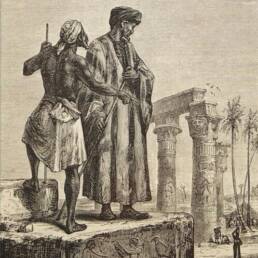What connects a scandalous affair of a former Governor of the Madras province and one of the oldest luxury hotels in India. A thread on how the Taj Connemara got its name.
November 27, 1890, the streets of London were abuzz. The scandalous divorce case of Robert Bourke, Baron of Connemara, and his wife Susan Georgiana Broun-Ramsay was finally heading towards a conclusion.
Getting a divorce was very rare in late 19th century England. It meant that Lady Connemara, daughter of the former Viceroy of India, Lord Dalhousie, was really angry with her husband who was Governor General of the Madras province at the time.
Let’s go deeper into this intriguing case. In 1886 Robert Bourke, a seasoned parliamentarian and politician, was made governor-general of the Province of Madras. A year later he was also made the first Baron of Connemara, a region of Western Ireland.
In the new governor’s household, were his wife Susan Georgiana, Lady Connemara, and also his niece, Lady Eva Quinn, and her husband. While staying in Madras it didn’t take long for Lady Connemara to find the heat unbearable.
The household then moved to the hills of Ootacamund for some months. But tension was already building up between the Connemara couple, with rumours flying around that Robert was being a playboy.
Meanwhile, Lady Eva had taken charge of the household and was acting as the hostess for dinner gatherings and parties. In October of 1888, Robert had to move back to Madras on official call and he took his niece along with him, leaving Susan in the hills.
A few days later the governor’s household decided to throw a party where Rich British aristocrats and eminent people around the province were all invited. Interestingly, Susan decided to show up on the eve of the party without any prior intimation, what happened later mortified her.
She found her husband Lord Connemara cuddling one of the housemaids. She stormed out of the governor’s mansion and became the only female guest of a hotel, frequented by British officers and soldiers, the Albany.
The Albany had an interesting history. Initially, it was built as a garden house by John Binny a merchant and surgeon. It was built on the land given to him by the Nawab of Wallajah. Around 1867 the mansion became the Imperial Hotel and, subsequently, in 1886 the Albany.
Susan stayed at the hotel for almost four months and barring a few people from her inner circle no one knew about this; it was nothing short of a scandal. She simply refused to go back. In November of 1889, she eventually moved back to England.
Later that year Hannah Moore, one of Lady Connemara’s former maids confessed to adultery with Lord Connemara while at Government House in Madras. Susan filed for divorce on charges of cruelty and adultery.
Lord Connemara who was still in Madras at the time couldn’t make it to the trial, and the court decided for Susan and annulled the marriage. Soon after that Robert resigned from his position and went back to England, his political career was pretty much over.
What happened to The Albany? In 1891 the hotel was purchased by Eugene Phillip Oakshott, and was renamed Hotel Connemara after its famous female guest. Over the next few decades, the Connemara went through many transformations while keeping its aesthetics.
In 1974, the hotel was leased to the Taj group and went through another set of renovations. Today, not surprisingly, nothing of the old structure remains, but still, the Connemara oozes an old-world charm showcasing the best of history and South Indian culture.
To give the devil his due, Lord Connemara was an able administrator. He laid the foundations for the public Library in Madras and was also instrumental in establishing the East Coast Railway Line connecting Chennai to Kolkata.
Sources:




